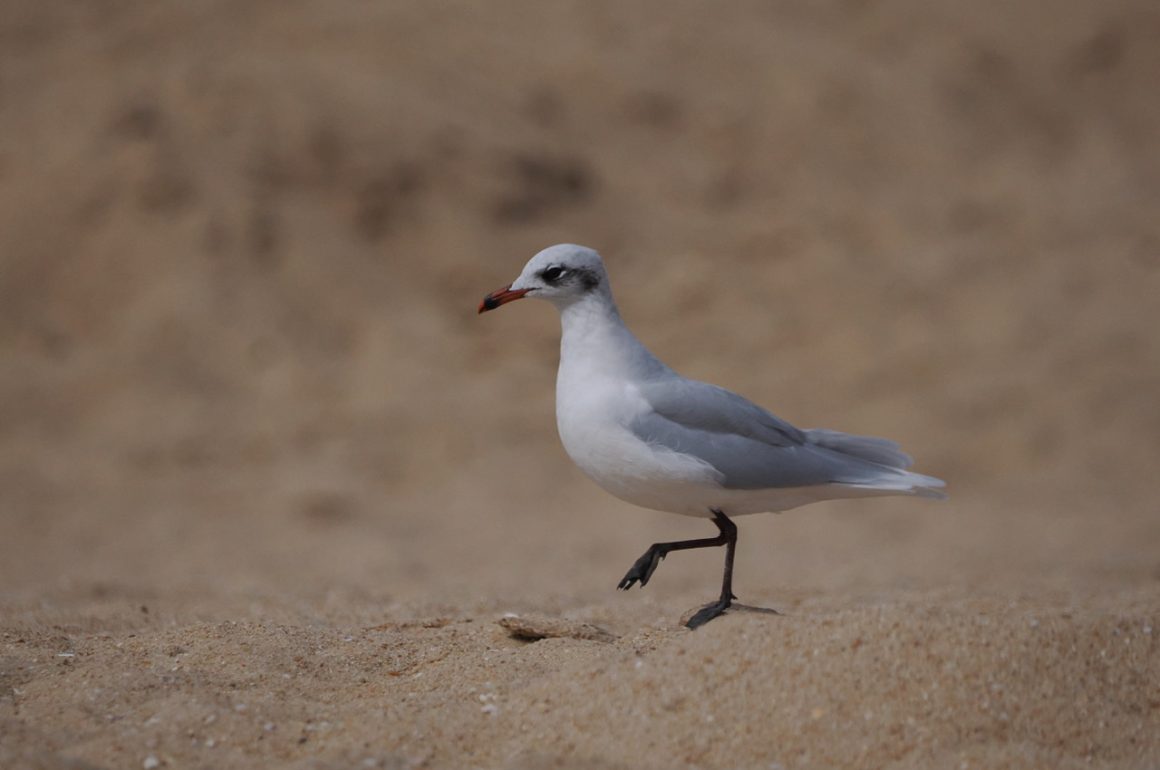
Though I have visited the Algarve, in southern Portugal, several times over the years, I’m always a little disappointed with the area, for it is densely populated and has suffered from over-development. However, many fine areas for birds remain, with extensive salt marshes and attractive coastal lagoons.
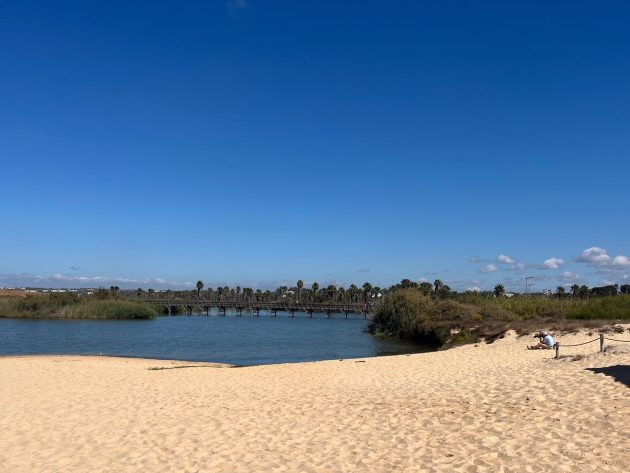
The Lagoa dos Salgados, Portugal. The seated figure on the right is the author, photographing a Turnstone (see picture below)
One of the best of the coastal lagoons is Salgados, behind the impressive Praia Grande de Pêra. I can do no better than quote one of the local birding guides: “Lagoa dos Salgados is a typical coastal lagoon – a body of water bordered by aquatic vegetation and separated from the sea by an extensive, unbroken dune cordon. The main body of water is formed by the mouths of two small rivers – the Espiche and the Vale Rabelho – and is frequently invaded by the sea, especially in winter, through man-made breaches in the dune cordon when the water level rises too high. The area subject to flooding which surrounds the lagoon on its north and east sides is bordered by arable fields, mostly abandoned, grassland and a golf course to the east. The lagoon covers an area about 50 hectares and is relatively shallow, encouraging the presence of a wide variety of waterfowl, including ducks, herons and waders.”
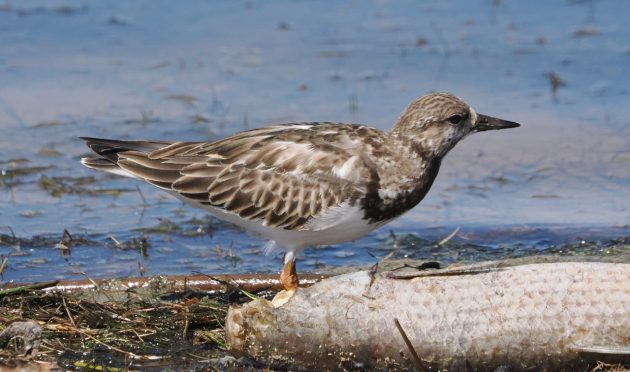
Turnstone: the dead fish was a draw
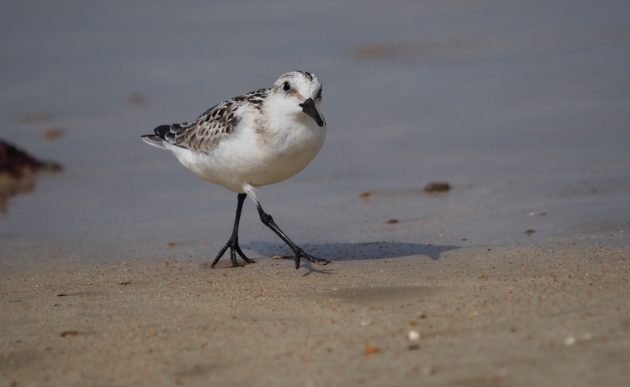
Sanderling, a wintering bird from either Greenland or Siberia
My most recent visits to Salgados have been in February 2023 and in September last month. Intriguingly, I saw a similar variety of species on both occasions, though the February visit was notable for the abundance and luxuriance of wild flowers, while in September the area surrounding the lake was parched and overgrazed, following months without any real rain.
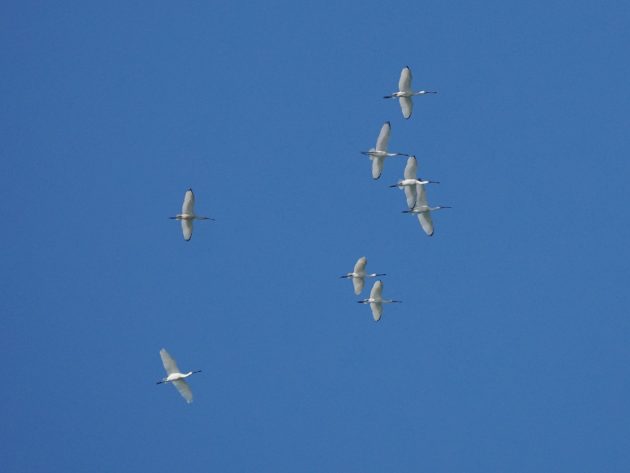
Spoonbills. This small flock, consisting mainly of young birds with black wing tips, soared high over the sea and disappeared south. Next stop Africa?
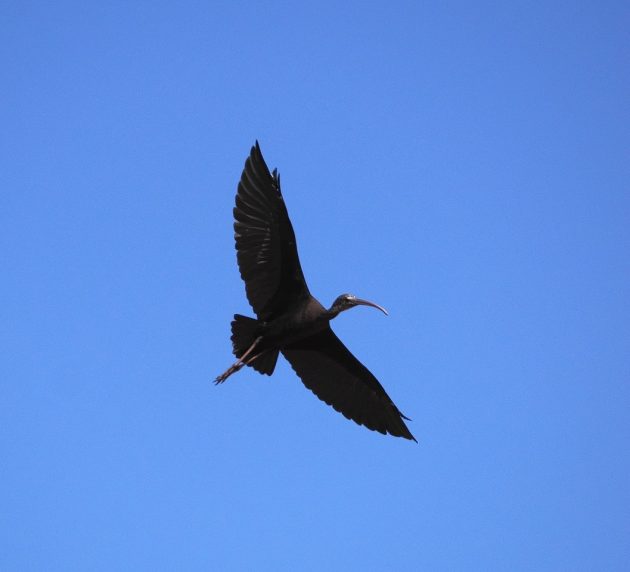
Glossy ibis
On occasions flocks of Greater Flamingoes drop into the lagoons, but on my recent visit I could only find a trio of these birds, all of which were juveniles, so lacking the wonderful pink plumage of the adults. I did find a small variety of wildfowl: a single Pintail, numerous Mallard and Gadwall, plus a small flock of four Garganey. The latter are the only ducks that are summer visitors to Europe, so these birds were almost certainly poised to fly south to their wintering grounds in Senegal. In spring a drake Garganey is a handsome little duck, but he doesn’t regain his breeding plumage until the end of the winter, so the birds I saw were still in full eclipse; without the help of my telescope I would have never picked them up.
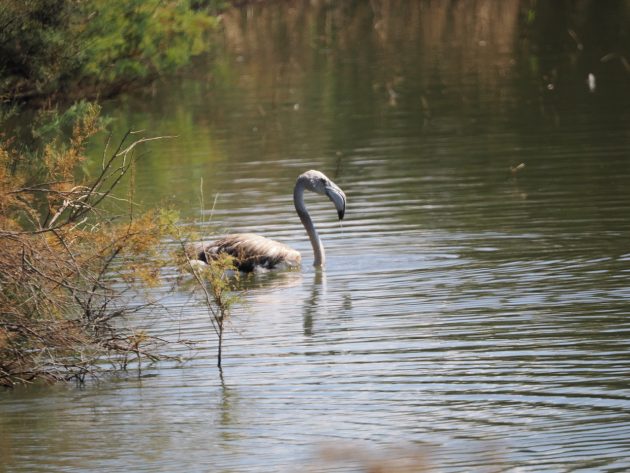
A juvenile Greater Flamingo
My September visit also produced plenty of Spoonbills, along with Grey Herons, Little Egrets and Glossy ibises – all birds I expected to see. I found a few waders, too: Snipe, Common Sandpiper, Turnstone and Sanderling, the last two on the brackish lagoon that adjoins the sea. Coots were the most abundant bird – I counted over 500 – while there were also plenty of Little Grebes.
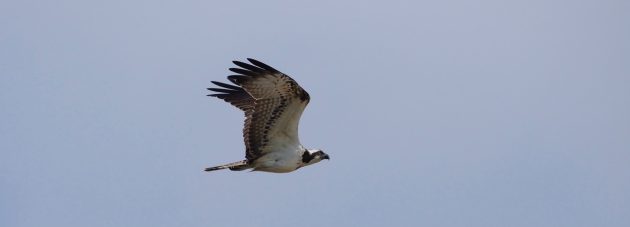
A passing Osprey
Perhaps surprisingly, I didn’t do well with raptors, finding only a couple of Marsh Harriers and a passing Osprey which, frustratingly, didn’t stay around to fish. Ospreys winter commonly all along the Algarve coast, so they are birds you can expect to see.
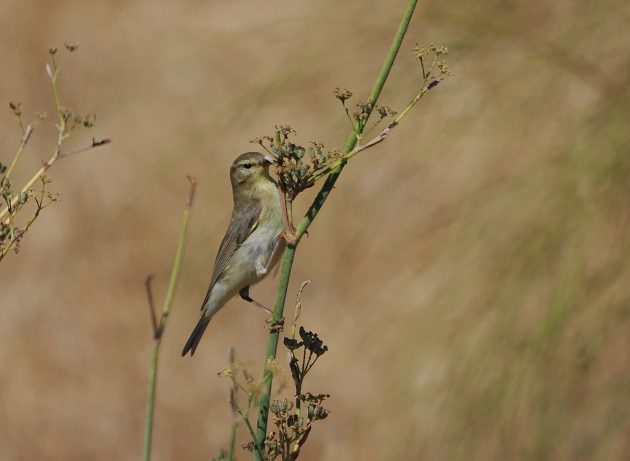
A migrant Willow Warbler, en route for Africa
On my last visit I found numerous Willow Warblers, feeding actively in preparation for the next leg of their migration. These warblers nest in northern Europe; they winter in Africa, with British breeding birds apparently favouring the Gulf of Guinea region. Other populations winter as far south as South Africa.
One of the special birds of Salgados is the Bluethroat, a delightful chat the size and shape of a European Robin. Bluethroats don’t breed here, but they can be found from early autumn right through to the following spring – I’ve saw them on both my recent visits. They are reed-bed skulkers, so are never easy to find, but when you do get a good view of one they are a real delight. Bluethroats generally come in two forms: white spotted and red spotted (the spot is in the middle of the male bird’s colourful gorget), though the small Spanish breeding population generally has no spot. The bird I saw last month was white spotted.
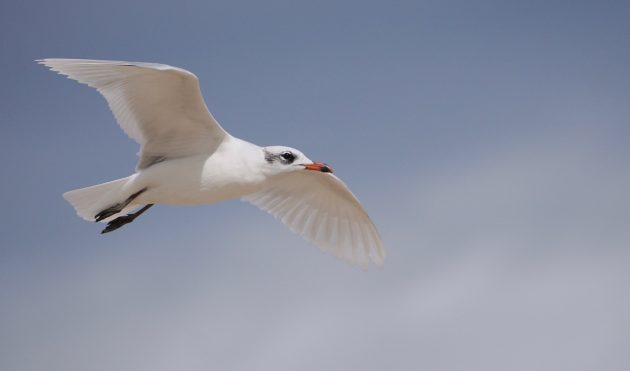
Mediterranean gulls: (above) an adult in winter plumage and (below) a 2nd-winter bird with small black markings on the wing tips
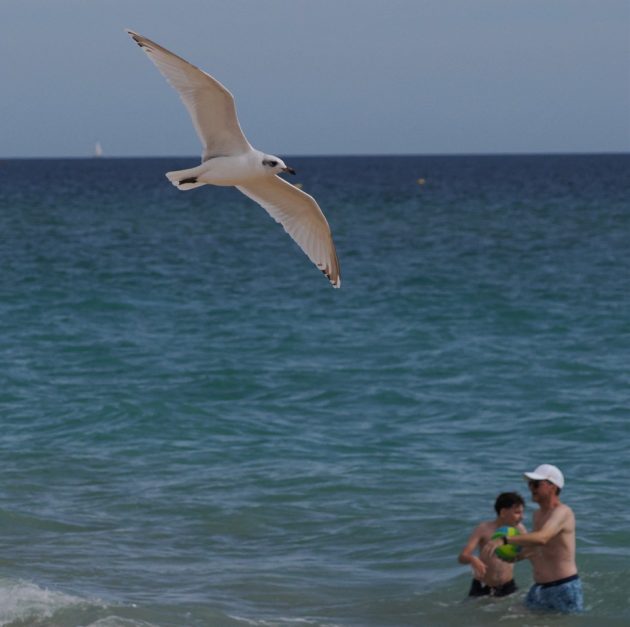
Over the dunes from the lagoon is one of the Algarve’s most impressive beaches – a long golden crescent of sand that stretches for over a mile. Because it is backed by the lagoon rather than holiday hotels it doesn’t get too crowded, while it’s popular with Sanderlings, migrants from the high arctic. It’s also a good place to see Mediterranean Gulls (though the sea here is the Atlantic, not the Mediterranean). These are handsome birds. The adults have pure white wings, which sets them apart from the more abundant Black-headed Gull. They are also a little larger than the latter and have distinctive red beaks and black legs. I can never resist photographing them, as they are usually cooperative and approachable.
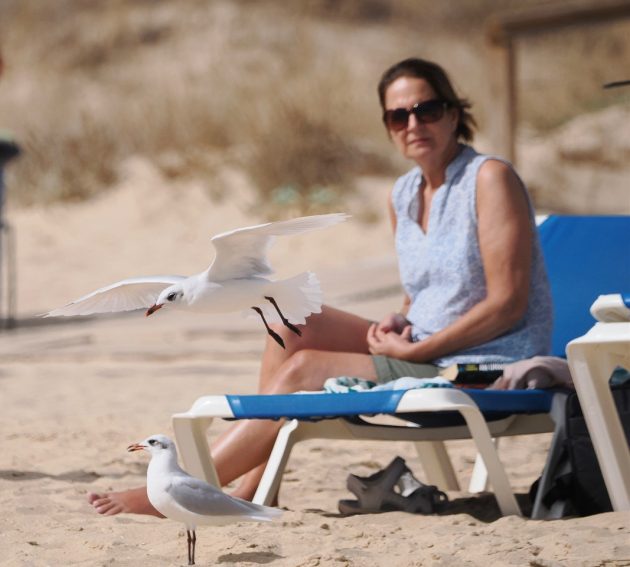



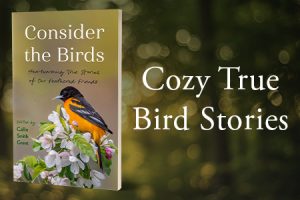


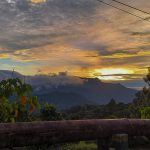
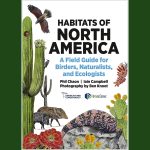




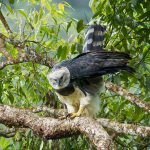
Ever since this post was announced by David I have been looking forward to it like a kid before Christmas. Great writing as usual and because I know this place quite well the feast of recognition. The lagoa was saved from development a decade ago. Like we needed more golf resorts and hotels in the Algarve…
Fascinated to hear that the lagoon was threatened with development, though it doesn’t surprise me. Fortunately it remains an oasis for birds, and hopefully will continue to do so.
I’ve come to expect good and informative writing and lovely photographs from David T’s posts. This post is marvelous in all categories. Algarve is a place I am unlikely to ever visit. So just one of the benefits of 10,000 Birds is to have an opportunity to know if its existence. Gives me hope. I also like about this post are the number of birds we share—Sanderling, Turnstone, Ibis, Osprey—all of which show up in Algarve. I was amused by David’s final sentence and last photograph. Might be slightly tongue-in-cheek?